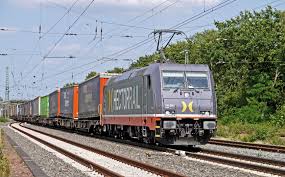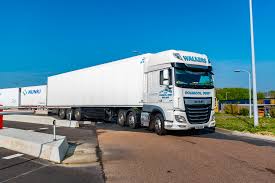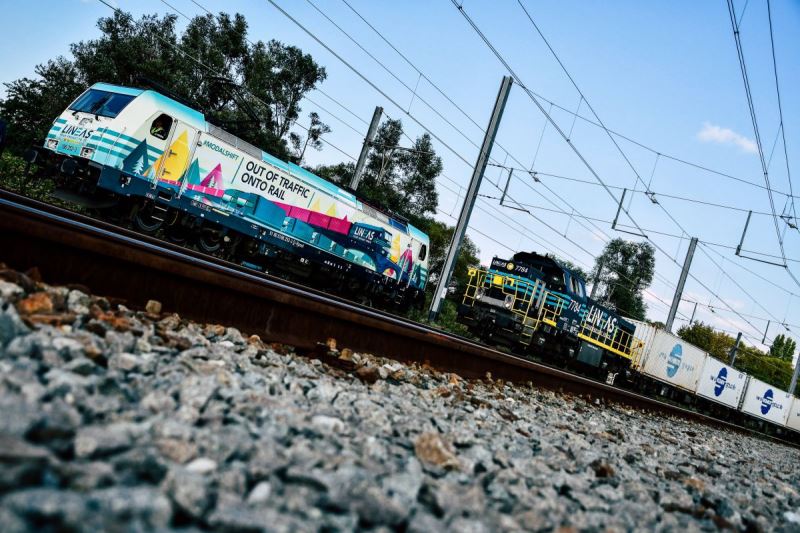Julian Turner: What is the Rail Freight Corridors Regulation (2010/913)?
Conor Feighan: The 2010 Rail Freight Corridors Regulation established rail freight corridors and the idea of prearranged ‘paths’ offering capacity. The corridors are welcome, but the prearranged paths have not been a success, and failed to create any real added value for international rail freight. In most cases, it was business as usual, with rail freight operators booking domestic capacity with each respective infrastructure manager.
The system does not address the underlying fundamental issues; namely, that capacity is allocated at the national level for a business that usually operates across borders, and that we are currently trying to address the needs of rail freight without granting the sector any priority access to the infrastructure network.
What is the rail freight paths system and why is it flawed?
The idea of rail freight paths was a compromise that was agreed upon during the institutional negotiations in 2010 because there wasn’t an agreement about capacity allocation for rail freight.
The idea was to have pre-arranged paths (PAPs) for freight trains along pre-arranged freight corridors, and that these would be agreed upon ahead of time by the infrastructure managers, creating something of a ‘one-stop shop.’ Rail freight operators simply booked their capacity at one place and off they went.
The problem is that the paths often don’t satisfy the demands of the actual end-users. There can be a number of stops involved, or the paths can disappear if there is any temporary capacity restriction along the corridor. Therefore, it is more reliable to book capacity with each infrastructure manager.
Let’s say you are booking a block train that leaves the port of Hamburg daily. The paths can be sporadic, for instance, in cases of works on the network, and there won’t be a path for every day. Quite often, when it comes to planning your capacity, it is not optimal if you are having to change each type of option you use. A pre-arranged path could be more attractive to end-users if there was an alternative offered when there was a temporary capacity restriction, for example. There needs to be predictability and a pattern in paths offered.
Is operating a European cross-border freight train more difficult than running road freight?
Yes, and there’s a simple reason for that; namely, that road has a single market, rail does not.
Freight operators must work within different national systems with their own rules on capacity allocations. Even if they are booking capacity with each individual infrastructure manager, they won’t align every time to allow for smooth running.

Freight rail capacity is allocated at the national level for a business that operates across borders.
If you are operating road freight, it doesn’t matter if you cross a border or not; the only thing that might change is that some member states operate a toll system, while others may have different payment set-ups, but the infrastructure needs don’t change – so there is no such thing as capacity allocation.
Progress is being made on creating a single market to address this issue, but we are not quite there yet, and what is becoming clear is that we are not going to get rail freight to the level where it needs to be by simply introducing pre-arranged paths or by tweaking the existing system. An ambitious approach is needed.
How can growing the European rail freight industry help reduce carbon emissions?
Transport emissions currently make up 27% of all EU emissions, and it is the only sector where they are still increasing, so there is a fundamental problem. Unless we do something about transport emissions, it will not be possible to reach the EU’s objective of being climate neutral by 2050.
Rail accounts for just 0.5% of this 27%, so clearly rail has an added value when it comes to emissions reduction. We often hear, ‘well, this won’t be such a problem if we have electric trucks’, and we do need to look at how we can decarbonise road freight because the reality is the sector can offer services – low-quantity goods, final-mile or to-the-door deliveries over small distances, etc – that rail cannot.

Transport emissions currently make up 27% of all EU emissions. Image: Rab Lawrence | Flickr
However, even if we do make road freight more sustainable, the issue of energy efficiency comes into it. Rail is up to six times more energy-efficient than road, so even if all trucks become electric, all we are doing is moving the emissions from road transport to the national grid. We need to be working together to minimise transport emissions and also reduce the energy needs of transport.
At ERFA, we are optimistic that the political dynamics have changed. The climate agenda is much higher on the political agenda, and there’s more public awareness that we need a modal shift in transport, and that this is not going to be achieved by minor changes to the existing systems.
What were the key ERFA takeaways from the recent public consultation on the European rail freight network?
Improving the quantity, quality and reliability of the paths for rail freight: if we want to see the sector grow, then it is clear there needs to be a certain amount of capacity, probably ring-fenced.
There needs to be long-term quantity and quality at an international level that meets the needs of the industry. For instance, we won’t be able to compete if we have quantity at a national level but it is not aligned, and you have freight trains sat at borders waiting for their slot in the next country.
[Another key takeaway was] equal priority and slot allocation. Rail freight corridors must be differentiated from the normal network; it can’t just be designating passenger capacity and then seeing what’s left over for freight.

ERFA wants rail freight to have a measure of priority access to the infrastructure network. Image: ERFA
Harmonisation of operating rules internationally, so that a freight train that is running on schedule doesn’t need to stop for another train. We also need to look at ensuring that infrastructure is 750m, P400 compatible across all of Europe, and at implementing supranational traffic management, so that evaluating the performance of rail freight against KPIs is carried out from point of origin to point of destination.
Finally, we need more leverage in the decision-making process. One option the ERFA is looking at is that European funding should be tied to the development plan of rail freight corridors.
What are the key ERFA targets for rail freight growth?
For the last ten years, freight has floated around 17%-18% of surface transport. We are looking to achieve 30% by 2030 through industry initiatives such as the Rail Freight Forward coalition.
There is a lot of homework that we can be doing as an industry to improve our systems and focus on customer service. In that regard, we need to be looking to increase competition on the rail network.